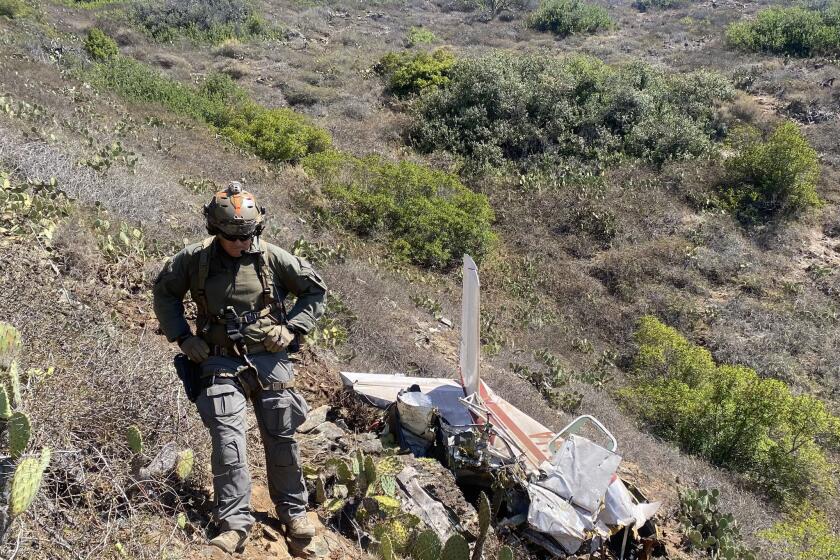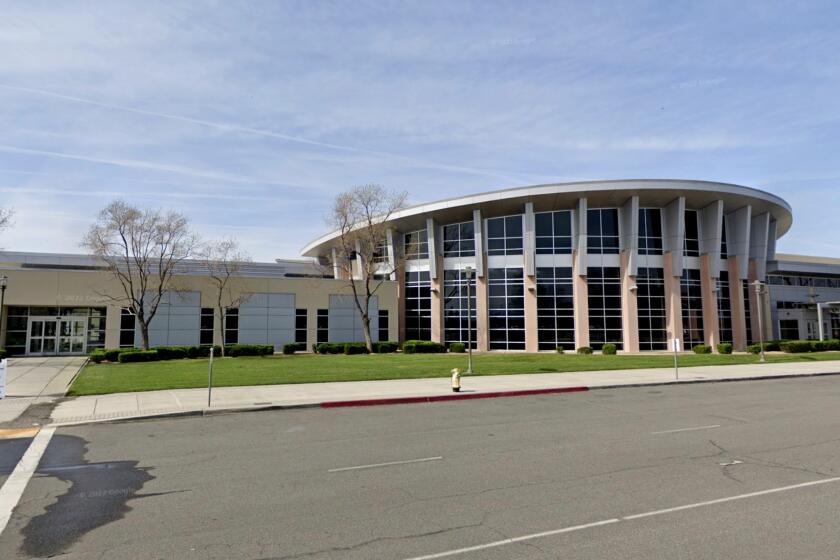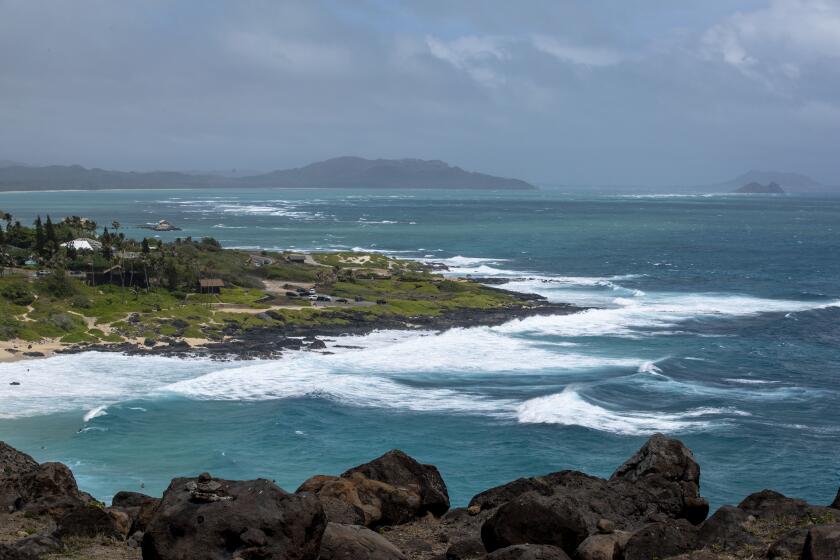Blue Line to Put Rail Service Back on Track : Transit: Three decades after the Red Cars stopped running, the Long Beach-to-L.A. line will be rolling by July 16.
Three decades after the Big Red Car trolleys were put out of business by autos, buses and Southern California freeways, Los Angeles transit officials later this year will start operating a new rail line in an effort to help unsnarl traffic congestion and avoid gridlock.
The tracks, rail yards and shops are built, the overhead power wires are hot, and the first of the big blue-and-white passenger cars are being tested on short stretches of the 22-mile, $871-million Long Beach-Los Angeles Light Rail Line.
Trains will officially start running between the two cities July 16. The fare will be $1.10 one way, and the trains will run every 10 minutes, carrying an estimated 20,000 riders a day, if all goes as planned.
Not since 1961 has Los Angeles had a commuter rail system. That was the year the Pacific Electric Co. shut down the last of the Big Red Cars that once trundled along 1,100 miles of track, linking places like San Bernardino to Los Angeles and the beach cities.
Officially, the new route will be called the Blue Line and will be the first operational system in a proposed $5-billion, 150-mile commuter rail network planned for Los Angeles County. The second leg of this network--the $3.4-billion Metro Rail subway--will be called the Red Line and will run north from Union Station to the San Fernando Valley sometime in the late 1990s.
The Los Angeles County Transportation Commission is the planning and funding authority for the ambitious return to commuter rail and is building the Blue Line. The Southern California Rapid Transit District is building the first leg of the 17-mile Metro Rail subway and will operate all of the trains in the network, including the Blue Line.
The commission is paying the RTD $10 million to start up and run the Blue Line. In addition, the commission estimates operation and maintenance costs will run $20 million a year, financed by fares and local transit-tax dollars.
Officials report that construction of the Blue Line is more than 90% complete, 5% over budget and, for the most part, on schedule. However, there are a couple of hang-ups:
* Temporarily, the line will end at Pico Boulevard in downtown Los Angeles instead of going underground into the Blue Line terminal in the Metro Rail station at 7th and Flower streets. Work on the underground station by the RTD is reported to be a year behind schedule.
* On the south end, work on the three-mile loop through Long Beach--and the last four of the route’s 22 stations--will not be completed until fall. So the line will temporarily end at Anaheim Street, officials said.
And there are still some serious problems to be ironed out between the commission and the RTD over who will be in charge of both passenger security and fighting the war against graffiti, once the trains start running. Each agency claims it is better suited for those tasks.
While the commission has been building the rail line, it has handled security. The RTD is scheduled to take over the Blue Line in May, when it will begin full-scale operational tests. However, it has not been decided whether the RTD will police the line with its own forces or will have help from the commission.
The Blue Line runs through some of the poorest neighborhoods in the city, crossing through turf claimed by drug-dealing gangs. Because of this, officials from both agencies agree that special efforts are needed to keep the line graffiti-free and safe for the thousands of passengers they hope to attract.
Problems with spray-can-wielding vandals began even before the cement had dried on many of the stations along the route through South-Central Los Angeles. And, officials said, thieves were stealing construction materials and doing an estimated $350,000 damage.
“Security is a big problem,” said Ed McSpedon of the Rail Construct Corp., the commission subsidiary in charge of construction. The commission has budgeted $1 million for graffiti control and contracted with the Los Angeles County sheriff to police the right of way. It wants the sheriff to continue as the primary law enforcement agency after trains start rolling, McSpedon said.
The commission hired crews to clean off the gang marks, stepped up law enforcement and adopted the successful anti-graffiti policies used by the New York and Washington transit systems. In those cities, no trains are allowed to run with any graffiti on the cars.
“We want to leave no doubt in the public’s mind about their security and safety on this system,” McSpedon said.
RTD officials echo the same thoughts, but they say they need no help to keep the situation under control. The district is beefing up its 69-member transit police force to take over security. RTD officials dividing the authority with the sheriff would only cause problems.
“We simply cannot expect to achieve a cost-effective, on-time, safe and reliable start if we continue to debate questions of basic approach,” RTD Executive Director Alan Pegg said, referring to the dispute. Pegg said security is “an essential element of the operational phase,” and he wants no interference from the commission.
Officials from both of the big transit agencies say the trains will run as scheduled, and the security of the passengers will be assured. They do not say how they intend to resolve their differences.
Meanwhile, contractors are putting the finishing touches on the rail system, hooking up the automatic signals, testing the crossing gates at 26 intersections. The RTD has hired half of the 220 managers, operators and maintenance experts needed to run the Blue Line and is training them for the May takeover.
The Blue Line trains will run along the Southern Pacific Railroad right-of-way north out of Long Beach across the Los Angeles River to Willowbrook Avenue. The tracks follow Willowbrook through Compton and Watts, then bend north to Washington Boulevard and follow that thoroughfare downtown to Flower Street. The line runs along the center of Flower Street and goes underground at 12th Street, tunneling into the 7th and Flower Street station.
The 22 open-air stations along the fenced route have raised platforms to allow passengers to step directly onto the trains. There are no gates blocking platform access, nor will there be any ticket or station agents. Everything will be handled automatically, officials explained. Each station will have fare vending machines and money changers.
Security will be provided by remote TV cameras, call boxes and roving police patrols. Undercover officers will ride the trains, McSpedon said. Passengers will be checked randomly to see if they have purchased fare tickets or have valid passes.
More to Read
Sign up for Essential California
The most important California stories and recommendations in your inbox every morning.
You may occasionally receive promotional content from the Los Angeles Times.









